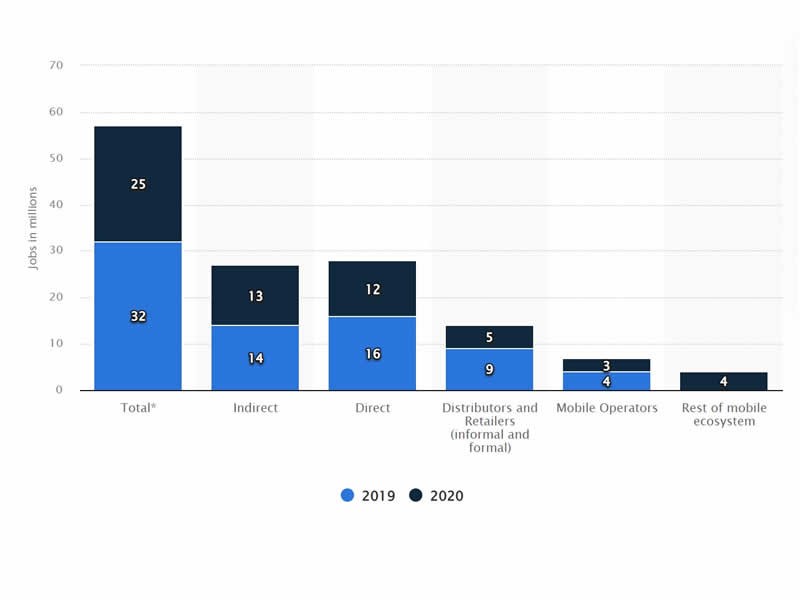Insight Blog
Agility’s perspectives on transforming the employee's experience throughout remote transformation using connected enterprise tools.
8 minutes reading time
(1552 words)
What is a Mobile Workforce?
What is a Mobile Workforce? Well it pretty much defined as a workforce comprising individuals who work outside of a physical office location. Lets dig deep on some of the fundamental aspects of the mobile workforce.
The number and complexity of today's mobile workforce, which refers to a group of people delivering service in the field, typically on-site with a customer, has expanded throughout time. Mobile workers, who are an important part of the wider desk-less workforce, require special technologies and methods to offer products and services to clients.
You can define this workforce as a group of employees who are geographically separated but are linked to one another and the company via computers, mobile phones, and other devices. Remote employees and field service workers are the two most common types of mobile workers.
You can expect remote teams to operate from anywhere as long as they have a good internet connection. Field service workers, on the other hand, must work from multiple places and travel to several job sites in order to complete their jobs. The distinction is slight, but the goal remains the same: a mobile workforce's productivity should be comparable to that of on-site staff.
You can expect mobile workforces to be productive while away from the company campus, thanks to the introduction of smart network edges. However, maintaining these networks generally necessitates high-cost hardware and IT personnel experienced in managing mobile deployments.
Mobile workforce examples
The concept of a mobile workforce encompasses more than just working from home. With the introduction of powerful mobile devices, sites personnel can now undertake fieldwork that would usually be completed in an office.
A mobile workforce's goal is to ensure that employees are as productive outside of the office as they are within. Employees in a mobile workforce should be able to access the same software applications and data from home as they would at a corporate headquarters.
Work does not always take place at a workplace or in a cubicle. It happens all over the place. A growing number of people are working remotely from their homes or favorite local hangouts. Even office workers who work from 9 a.m. to 5 p.m. have the majority of their work done outside of the office. Work is doable if you have access to a smartphone, tablet, or laptop. In a nutshell, the 9-to-5 era is over.
The emerging work style is captured in this data visualization. It paints a clear picture of why businesses should abandon the notion that work must be rigid and inflexible. In fact, three out of five employees feel that they don't need to be in the office to get more work done.
Mobile workforce statistics 2020
Managing a mobile workforce is easier than it used to be, thanks to a variety of technology. Cloud applications and the ubiquitous Wi-Fi and 4G have supplanted faxes and office phone lines. Furthermore, today's smartphone users are anticipated to number in the billions, resulting in unparalleled levels of digital access.
It's easier to solve problems, interact with team members, update work schedules, and keep track of work in progress now that new, streamlined technology options are available.
Many businesses have begun to see the importance of increasing their investments in technologies that support mobile workforce operations. Mobile workforce management solutions are increasingly being used by industries that have traditionally lagged behind in technology investment, such as healthcare and manufacturing.
Businesses that use technology to enable their mobile workforce have found incredible returns. New Jersey Respiratory Associates, for example, was able to minimize back-office expenses and take on more accounts thanks to automation and superior data management, rising by 20% for three years in a row.
This tendency is also visible in the larger investment market, in addition to investing in individual companies. Millions of dollars are flooding into mobile workforce management solutions as a result of venture capital firms starting to create their portfolio of desk-less technology. However, there is still a lot of space for investment in mobile workforce management technology; in fact, just about 1% of software investments are presently supporting the desk-less workforce.
Over the years, mobile workforce practices have increased at an exponential rate; every day, new technologies are produced that make it easier to work and interact with others. This is the primary reason why businesses allocate more money on new software, training, and standards each year.
Putting in place these new procedures ensures a successful employee mobile workforce, which will ultimately result in engaged, productive, and contented employees who feel cared for and valued. This, in the end, is what distinguishes the best firms from their competitors: their additional value; the reason why these organizations appear on lists of the best places to work and get brand awareness.
Benefits of a mobile workforce
There's a distinction to be made between being mobile and having enhanced mobility, and it all comes down to productivity. Remote workers must be supplied with the greatest tools to accomplish their jobs in order to be productive. You can't send staff out with mobile devices and hope for the best, and you can't expect them to do their best work if you offer them antiquated technology or poor device management. In addition, there are several benefits of a mobile workforce.
#1.Cost-effectiveness
All organizations, especially small enterprises, and start-ups should attempt to keep costs as low as possible. However, hiring more people to meet rising demand necessitates more workspace, which costs more money — a catch-22 for a growing company.
There's also the time and effort required in finding and settling into new premises, in addition to the cost. Some of these expenditures can be reduced by encouraging staff to work remotely one or two days per week. It can also save money on bills because fewer individuals will be utilizing office utilities.
#2. Employee behavior and efficiency
It provides more information about employee productivity and behavior. Analytics tools in mobile workforce management solutions provide insight into employee locations and time stamps, as well as critical metrics of their work, to assist you in understanding what's working. This information can then be used to improve your mobile workforce management approach.
#3. Productivity increase
The comfort of one's surroundings can provide the space needed to do work that necessitates attention. It might be tough to find the attention and calm needed to perform work in a noisy office.
The productivity of a mobile office is also increased. There is no downtime due to natural disasters, physical server failures, or other equipment failures. Employees don't have to rush back to the office to return calls or respond to e-mail, which helps them meet their customer service goals.
Mobile working advantages and disadvantages
A mobile workforce allows employees to choose when and where they wish to work. Employees may work from anywhere, at any time, thanks to smartphones, high-speed Internet connections, tablets, and video conferencing, to name a few tools. Although not yet the standard for many businesses, the popularity of a mobile workforce is rapidly expanding.
#1. Advantages
Employees who work from home are happier and more productive. During a study of call center employees who worked from home, a Brown University poll indicated a 12 percent increase in performance. Employees can also avoid a long journey by working from home. It is simple to implement a work-from-home policy. Employees only need a computer, and a computer is not complete without an internet connection as it is needed to access work e-mails and files. There is no need to prepare ahead of time.
Businesses might save money by renting or purchasing less square footage for central office facilities as more workers work from home. Flexible workspaces give employees a place to work even if they are only in the office on occasion.
#2. Disadvantages
Employees may be linked to their work-centered mobile devices at all times due to the same technology that allows them to work in a variety of locations. Because of the ongoing connectedness, employers may feel free to contact their employees when they should be off the clock, and employees may feel compelled to give up leisure time and restorative slumber.
We can say that a mobile workforce is beneficial, but it is not a good instrument for developing a strong company culture. Employees can get to know one another and identify with the corporate culture in a central office atmosphere. Working from home, no matter how many video chats you hold, cannot deliver such benefits. So, you can use an intranet like AgilityPortal to solve this issue.
Mobile workforce management for utilities
Maintenance and customer service are responsibilities of utility field workers. Parts availability, equipment maintenance histories, customer information, and instructions are all important factors in successfully responding to questions and completing tasks. To avoid uncomfortable travels, field personnel need to know when an order has been altered or canceled before they arrive at the working location.
Mobile workforce management is the answer to these problems. To maximize the scheduling, dispatching, and tracking of field personnel, such systems rely on digital technologies such as artificial intelligence and other digital tools to help utility workers in the field.
Categories
Blog
(2590)
Business Management
(318)
Employee Engagement
(204)
Digital Transformation
(172)
Intranets
(119)
Growth
(118)
Remote Work
(61)
Sales
(48)
Collaboration
(37)
Culture
(29)
Project management
(29)
Customer Experience
(26)
Knowledge Management
(21)
Leadership
(20)
Comparisons
(5)
Ready to learn more? 👍
One platform to optimize, manage and track all of your teams. Your new digital workplace is a click away. 🚀
Free for 14 days, no credit card required.















